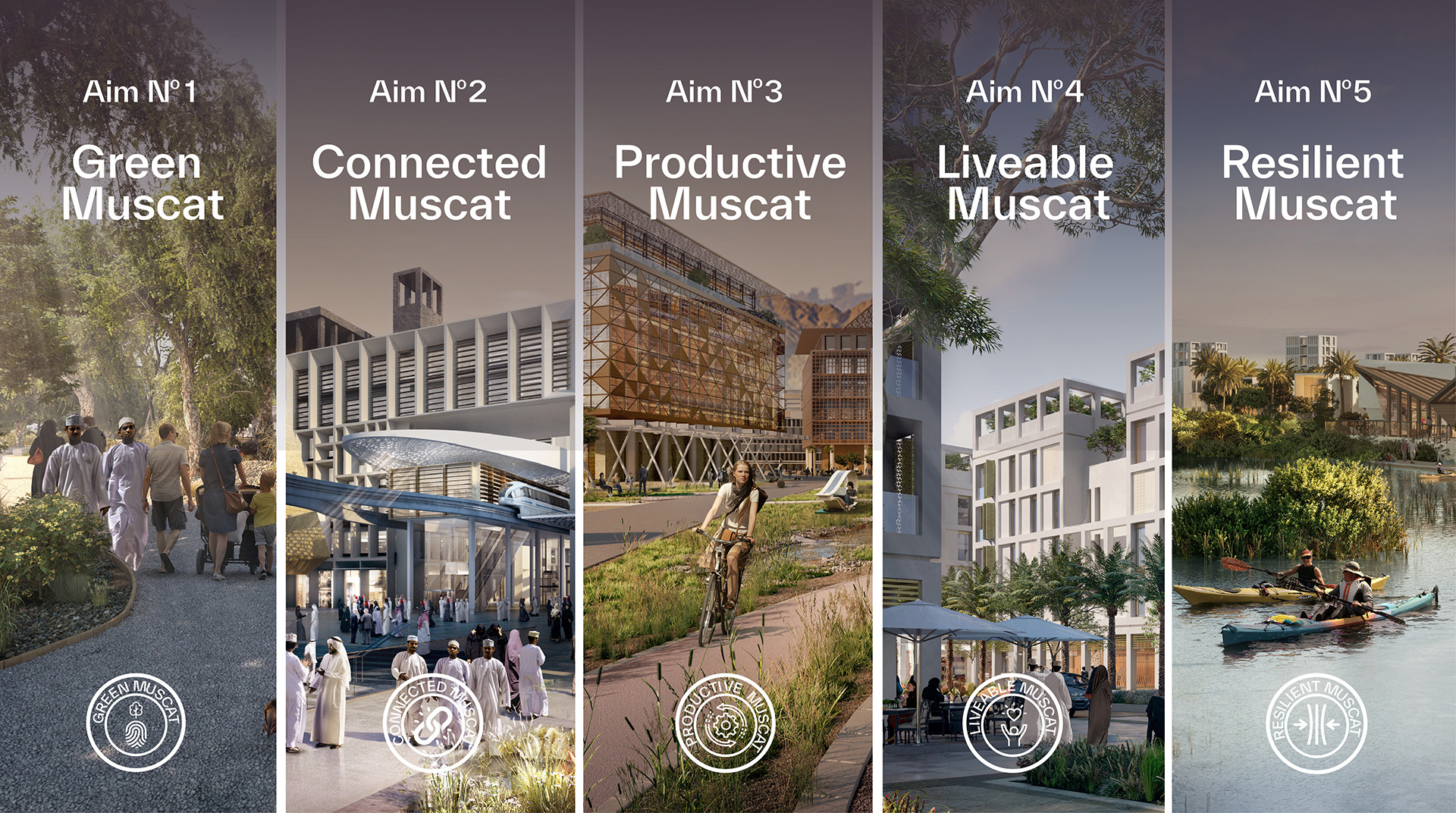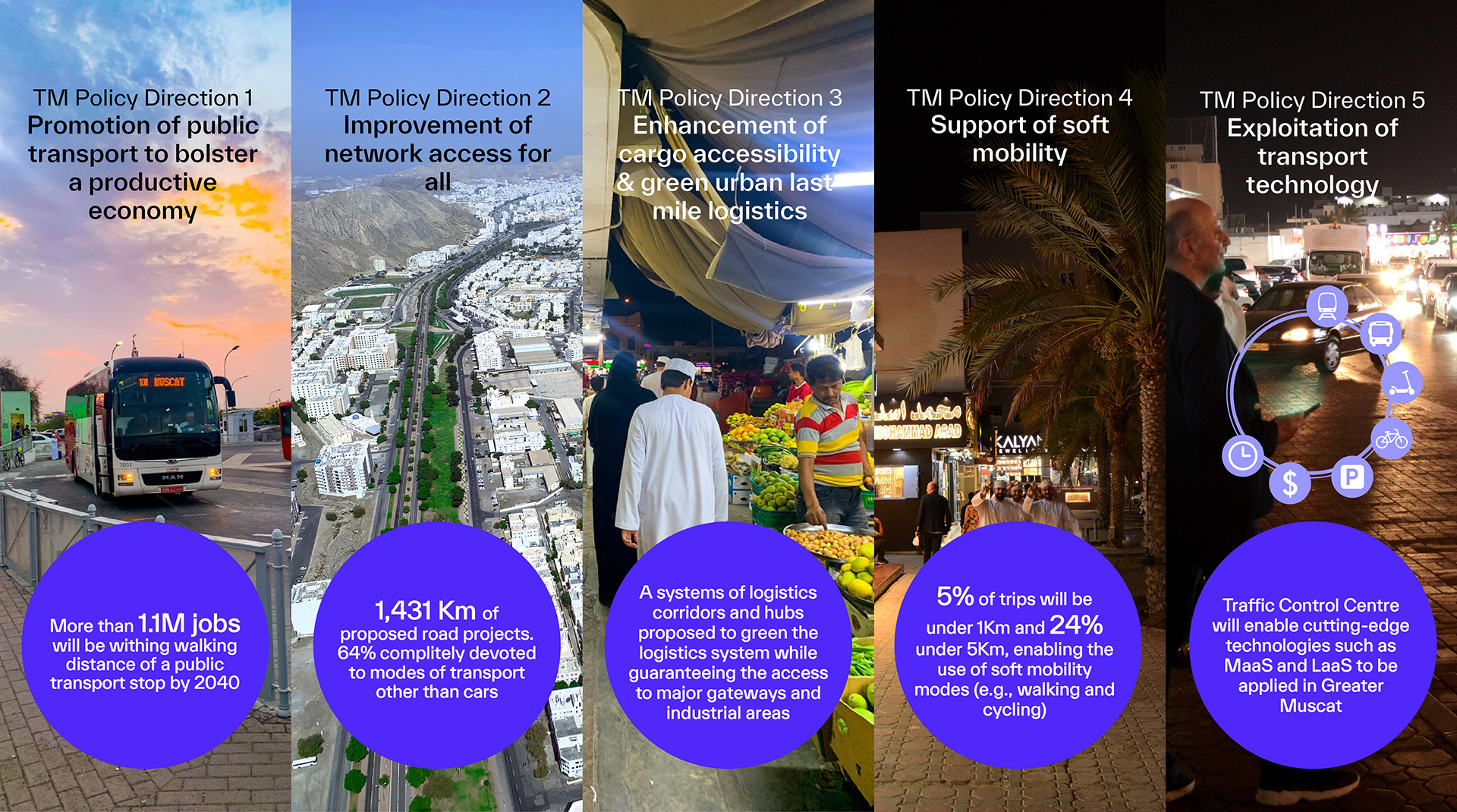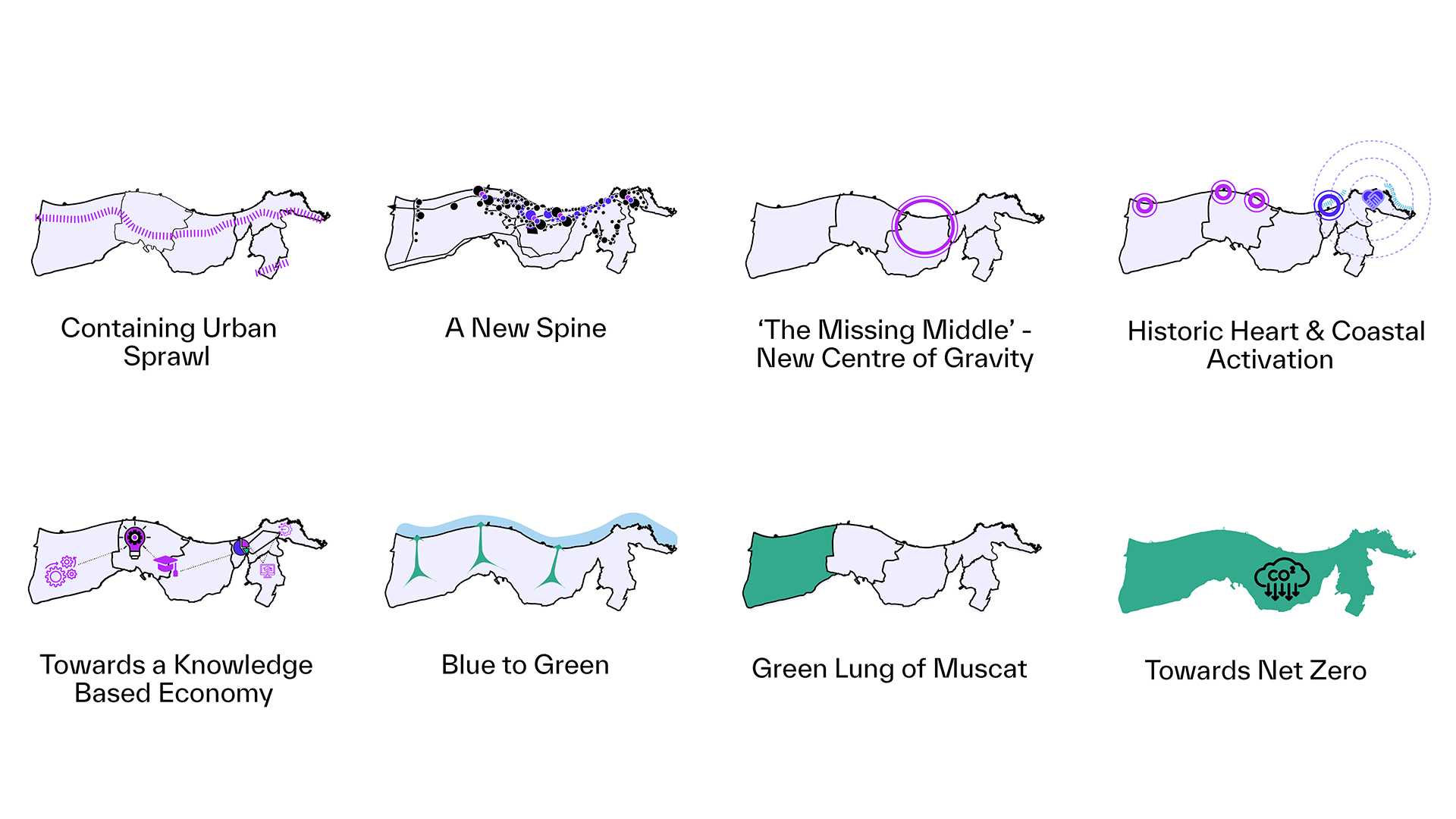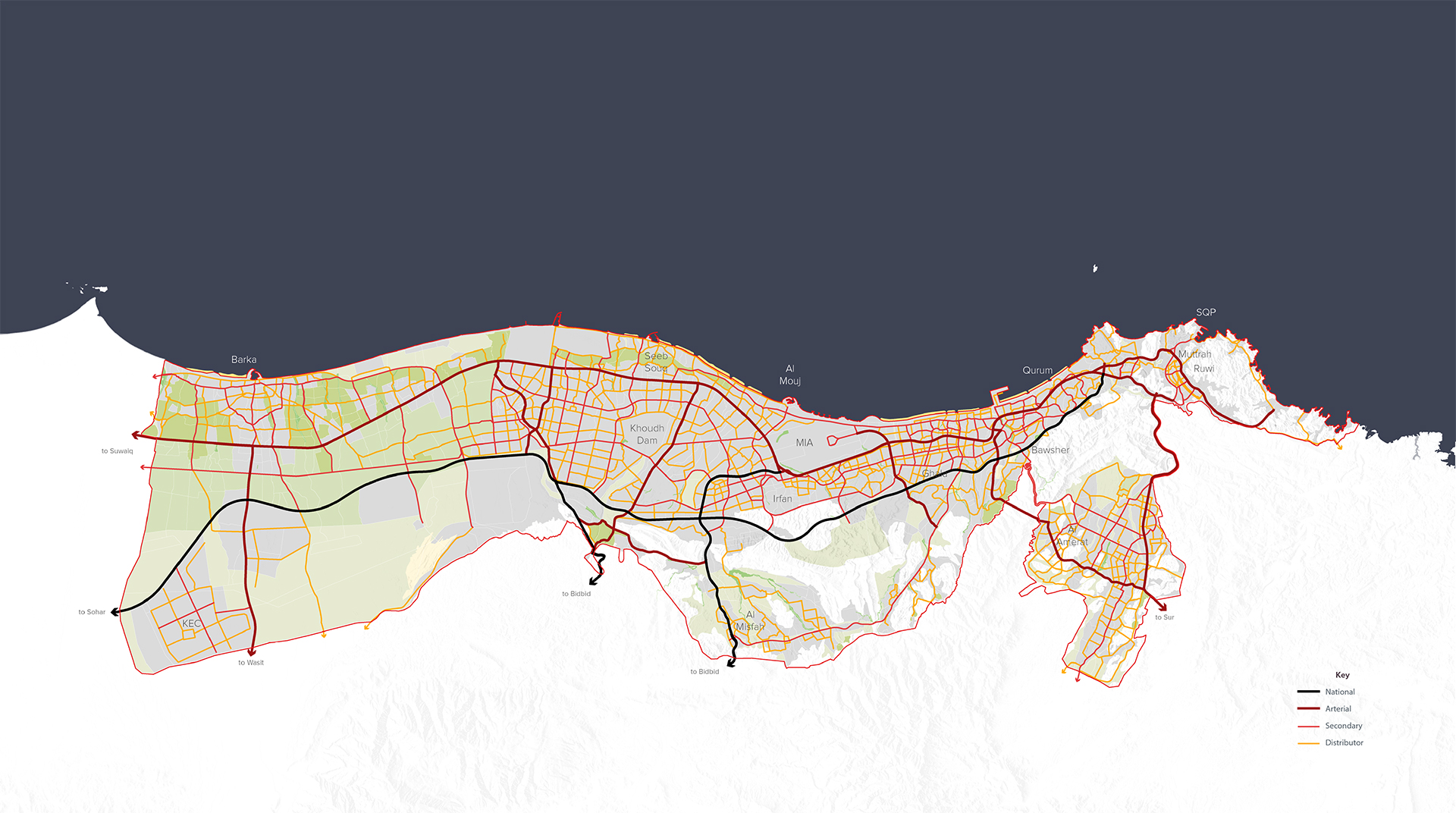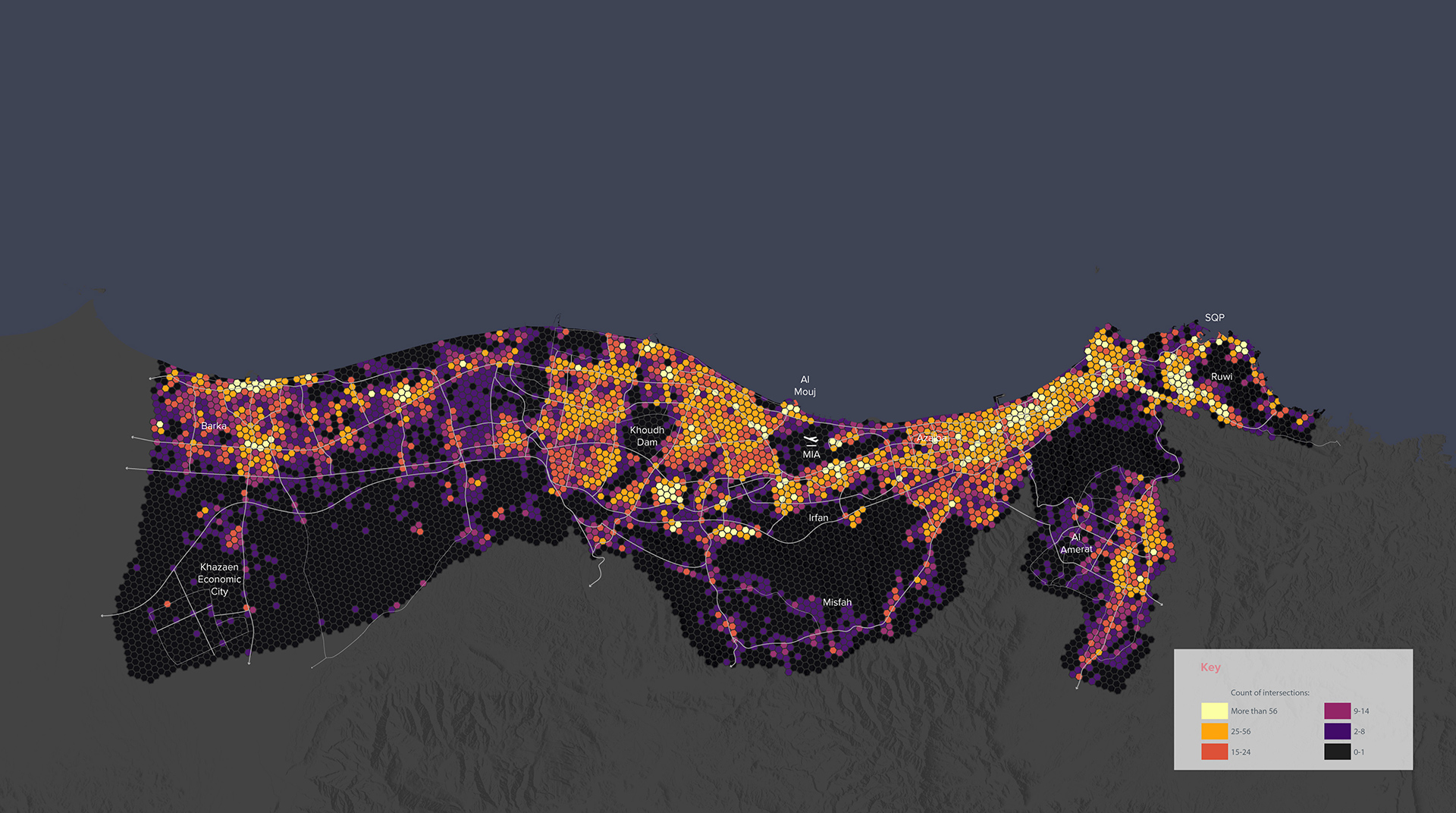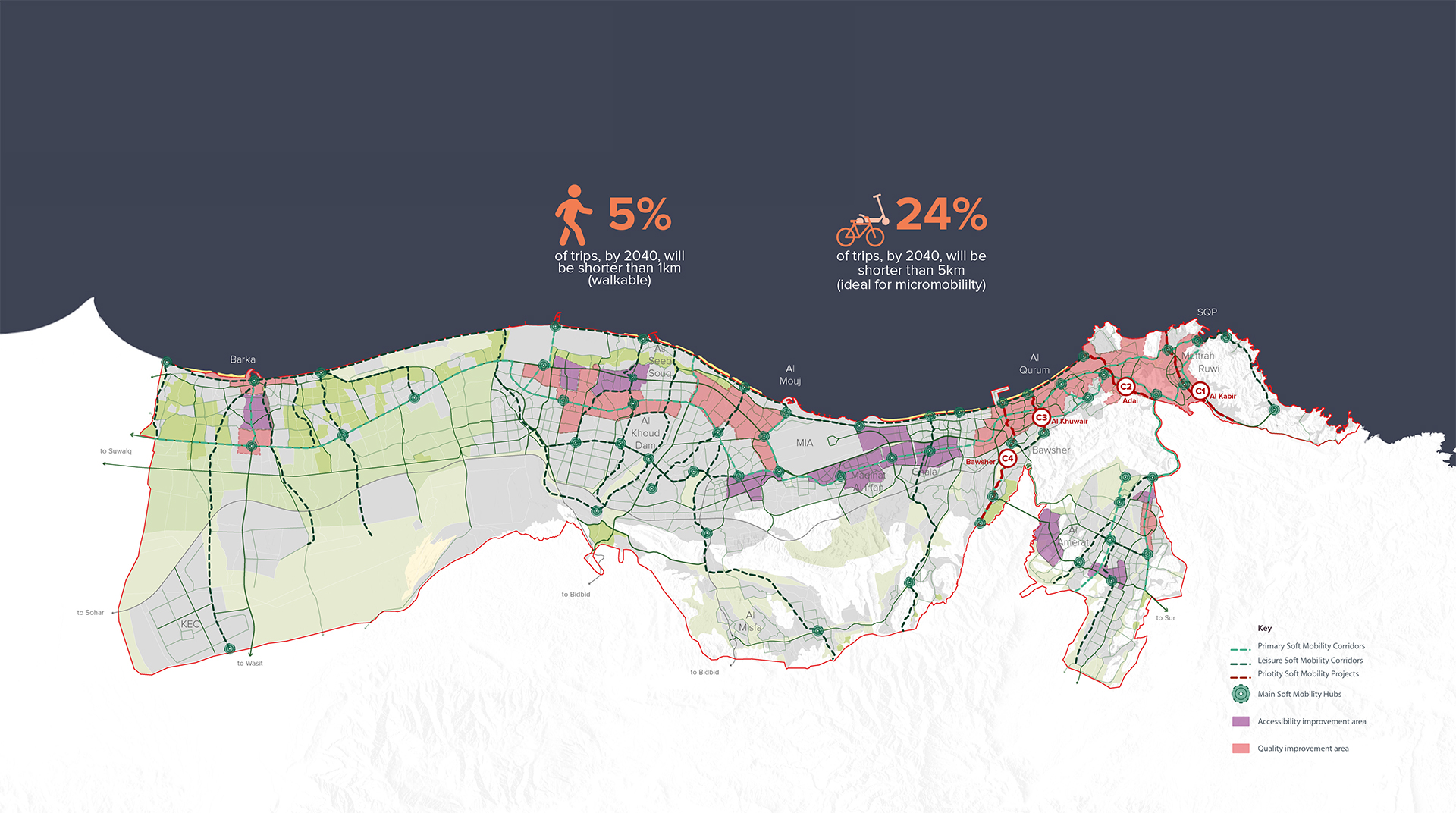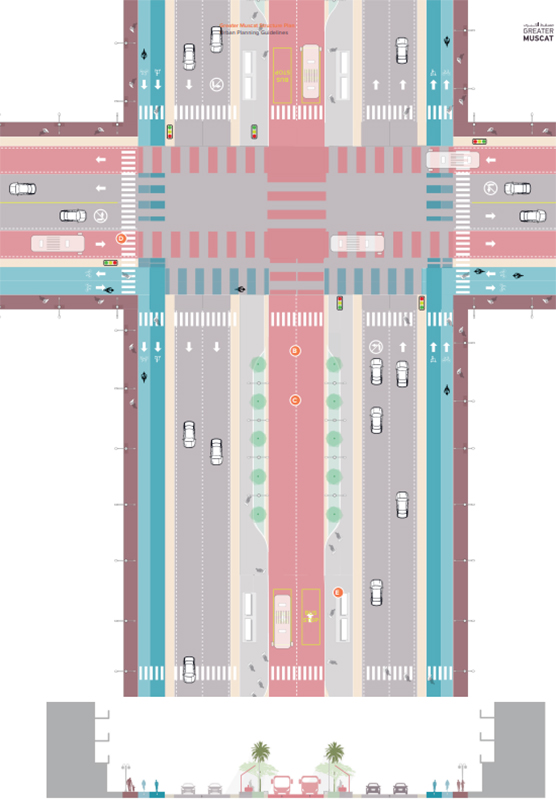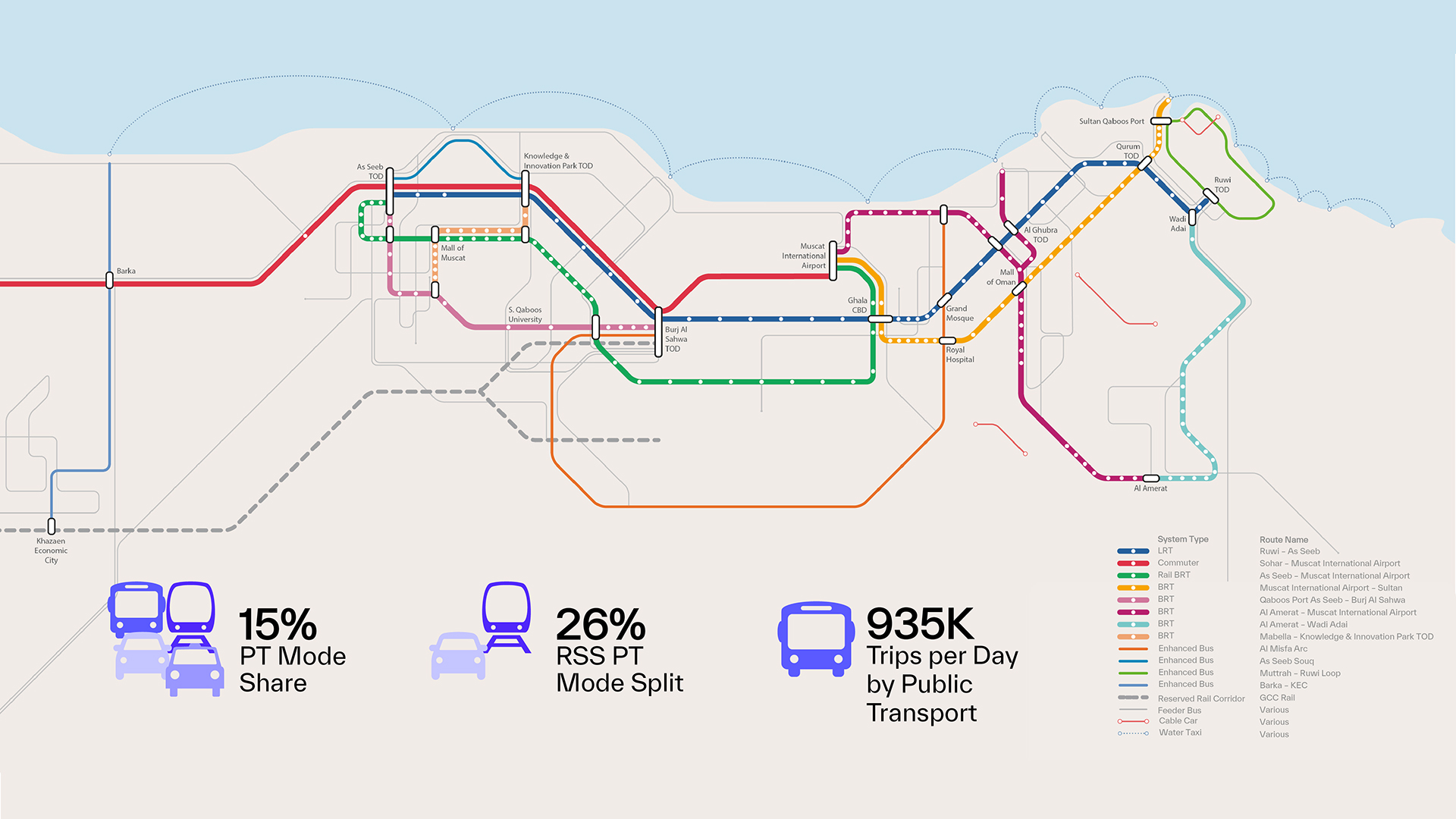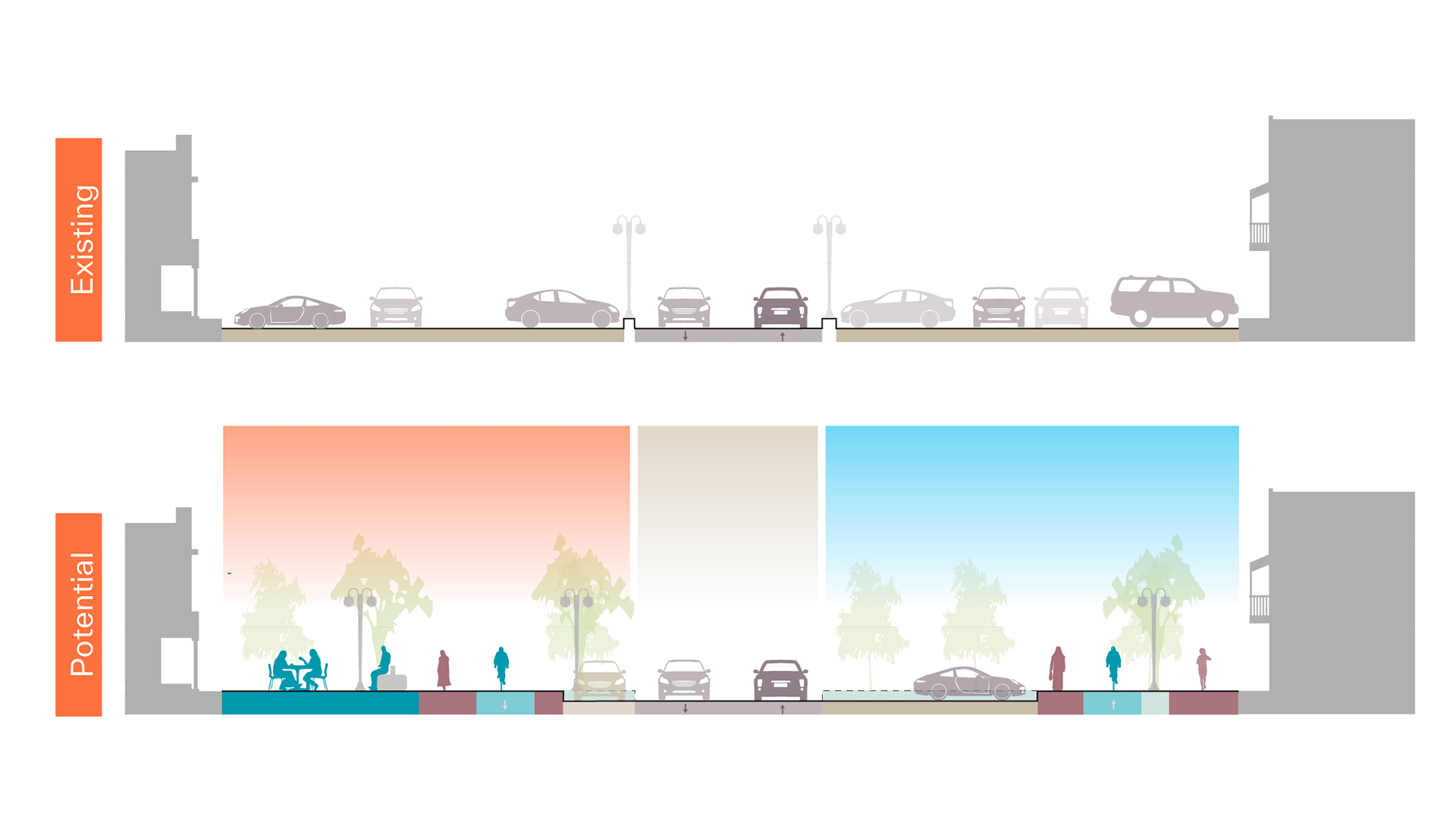Greater Muscat Structure Plan
Muscat, Oman
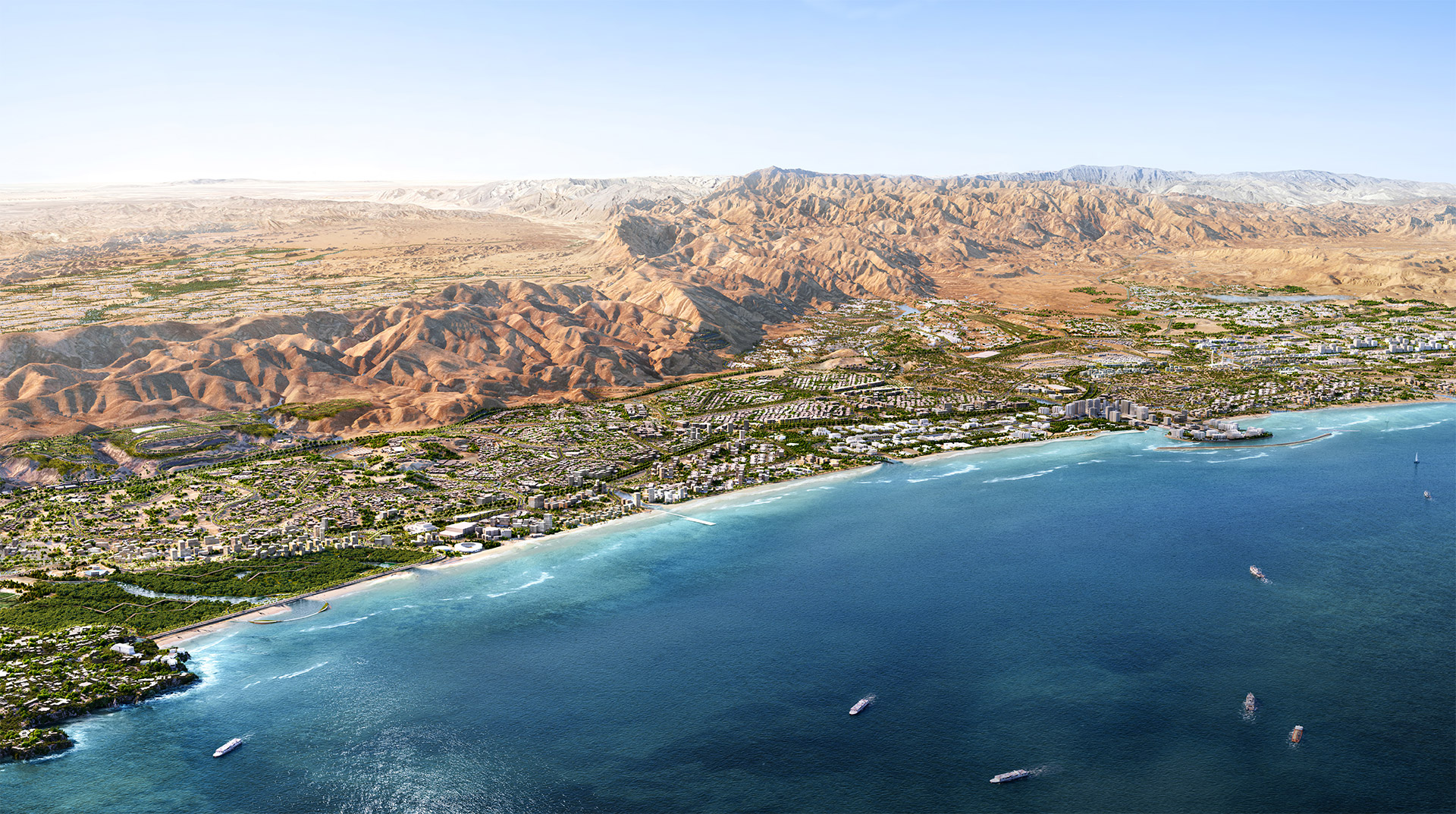
The aim of the Greater Muscat Structure Plan (GMSP) is to provide a more focused spatial development strategy for the metropolitan region. The development should balance demands for economic needs and quality of life, while delivering sustainable growth that supports the prosperity of its people, safeguarding its natural environment and strengthening communities socially and culturally.
Population growth, urban sprawl and a high degree of car dependency contribute towards increasing challenges for everyday urban mobility where transportation infrastructure becomes a bottleneck of social and economic life within the whole Greater Muscat’s prevailing area.
The low density - in terms of residential buildings and, thus, population density - paired with the somewhat “random” distribution of jobs is the reason for the great distances for commuting in Greater Muscat and generates high traffic levels.
The GMSP had the task to take forward developing strategies, policies, and interventions that define the future urban environment and development directions of Greater Muscat.
The transport modelling exercise, developed by MIC-HUB with the project team, estimates that the amount of daily individual motorised journeys in Greater Muscat will grow from 3.7M (2022) to 6.2M (2040).
The GMSP is compelled to deal with this increase, and, as much as possible, try to propose ways of shifting it onto sustainable modes, such as public transport and soft mobility modes.
Location
Muscat, Oman
Client
F&M Middle East Engineering Consultancy
Main expertise
Regional & Urban Transport Planning; Transport and Traffic Modelling; Spatial Analyses
PROJECT HIGHLIGHTS
- Development of strategies, policies, and interventions that define the future urban environment and development directions of Greater Muscat
- Estimation of the expected mobility indicators for future years using a multi-model transport simulation
- Promotion of soft mobility modes and public transport to reduce car dependency
- Strategies to reduce private vehicle trips
Project gallery
Our contribution
The mobility strategy, developed by MIC-HUB, focuses on strengthening and promoting sustainable mobility by reducing private-vehicle dependency, which is currently responsible for 94% of trips.
The overarching mobility framework focuses on:
• containing private vehicle trips,
• promoting public transport use,
• favouring active mobility.
The GMSP builds on the policies outlined in an Efficient Transportation System of the Oman National Spatial Strategy and Regional Spatial Strategy.
Five policy directions were created to address the mobility and transport proposals of the GMSP:
• Public Transport to Bolster a Productive Economy,
• Improved Network Access for All,
• Enhancing Cargo Accessibility & Greening Urban Last-mile Logistics,
• Enable Soft Mobility,
• Exploiting Transport Technology.
Through the use of a multi-model transport simulation, the MIC-HUB team was able to estimate the expected mobility indicators for future years.
The cumulative effect of the proposed projects is a much more balanced mode share, where public transport grows to reach 15% of the trips, and car use is reduced to 43% of trips.
This increase is supported by a robust proposed public transport system that will cover 80% of the population in 2040.
